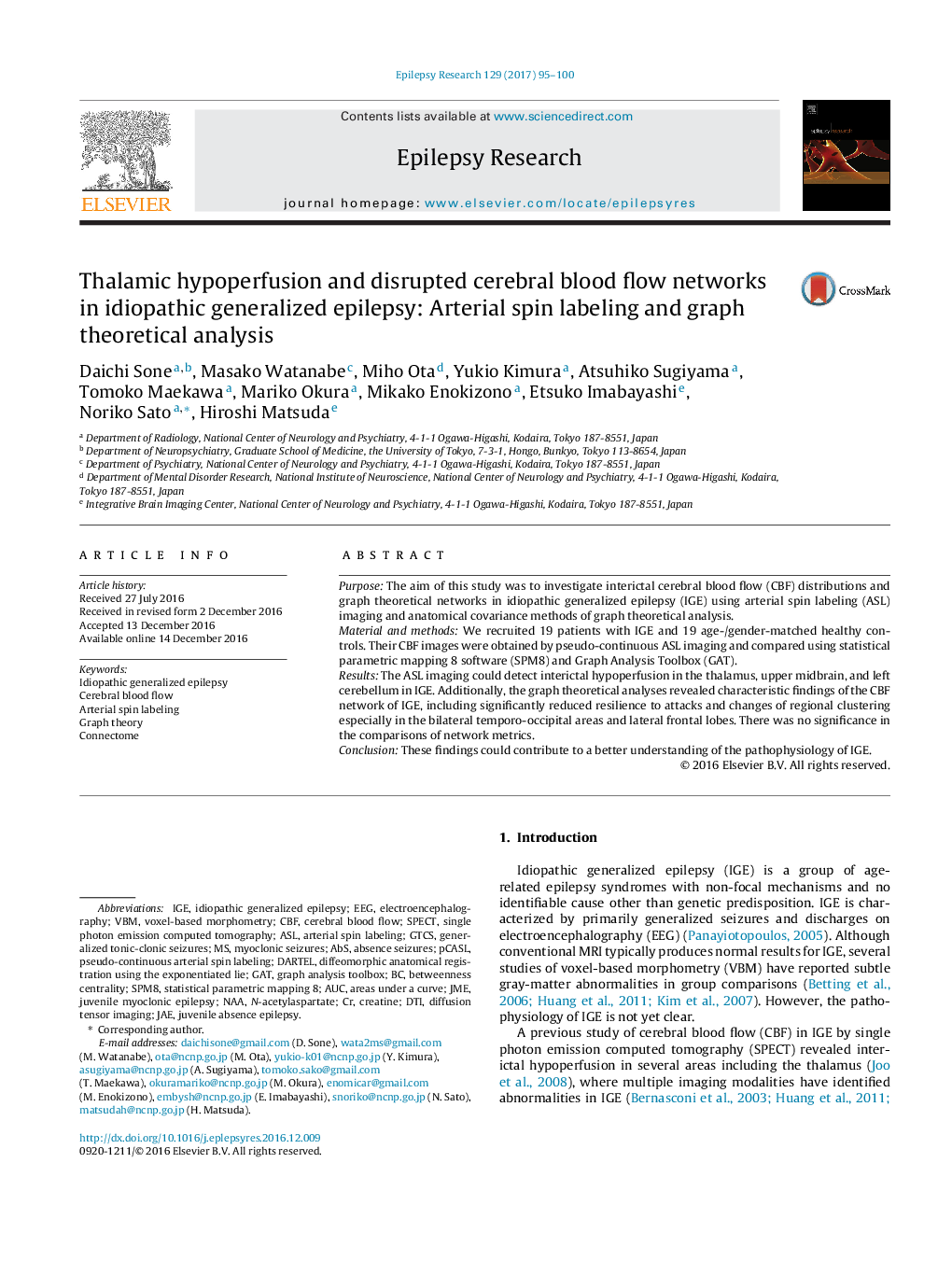| Article ID | Journal | Published Year | Pages | File Type |
|---|---|---|---|---|
| 5628777 | Epilepsy Research | 2017 | 6 Pages |
â¢We investigated cerebral blood flow (CBF) in idiopathic generalized epilepsy (IGE).â¢Arterial spin labeling (ASL) and graph theoretical analysis were performed.â¢19 patients with IGE and 19 age-/gender-matched healthy controls were recruited.â¢ASL detected hypoperfusion in the thalamus, upper midbrain, and cerebellum in IGE.â¢Graph-theoretically IGE showed reduced resilience and regional clustering changes.
PurposeThe aim of this study was to investigate interictal cerebral blood flow (CBF) distributions and graph theoretical networks in idiopathic generalized epilepsy (IGE) using arterial spin labeling (ASL) imaging and anatomical covariance methods of graph theoretical analysis.Material and methodsWe recruited 19 patients with IGE and 19 age-/gender-matched healthy controls. Their CBF images were obtained by pseudo-continuous ASL imaging and compared using statistical parametric mapping 8 software (SPM8) and Graph Analysis Toolbox (GAT).ResultsThe ASL imaging could detect interictal hypoperfusion in the thalamus, upper midbrain, and left cerebellum in IGE. Additionally, the graph theoretical analyses revealed characteristic findings of the CBF network of IGE, including significantly reduced resilience to attacks and changes of regional clustering especially in the bilateral temporo-occipital areas and lateral frontal lobes. There was no significance in the comparisons of network metrics.ConclusionThese findings could contribute to a better understanding of the pathophysiology of IGE.
